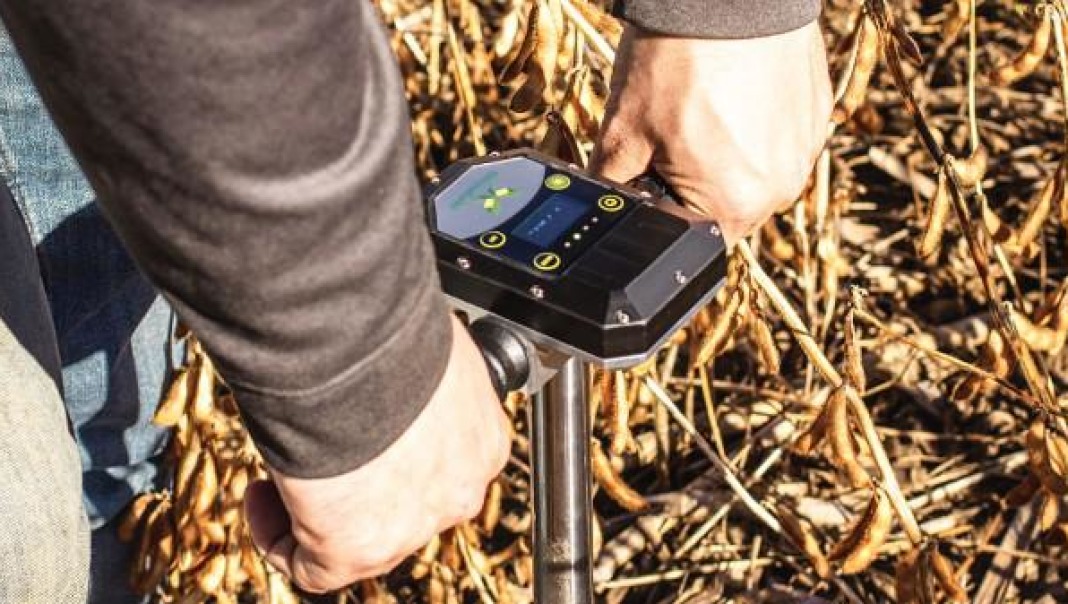Real-time results from soil testing
Monday, August 15, 2022
Reference: FCC
 If there is one thing many farmers wish for more of, it’s time. After all, when it is crunch time, there never seems to be enough hours in a day. Whether in the hustle and bustle of spring or a busy autumn, the minutes and seconds on a clock are always at a premium.
If there is one thing many farmers wish for more of, it’s time. After all, when it is crunch time, there never seems to be enough hours in a day. Whether in the hustle and bustle of spring or a busy autumn, the minutes and seconds on a clock are always at a premium.It’s no different for crop farmers curious to know exactly what’s in their dirt. Soil tests give calculated readouts of macro and micronutrients as well as information about pH and other sensitive information. There’s just one problem: it can take an agonizing amount of time to receive this information.
Traditionally, you must probe and take a soil sample and send it to a lab for analysis. It enters the lab’s queue before being analyzed, and results are sent back. This process can take days to weeks. Even a few days can be too long, especially when you’re trying to make educated decisions about what fertility program to run on your soil. What if you could reduce the wait time to 25 seconds?
Innovative technologies are changing the way soil sampling works. One such technology uses a mobile probe that works with cloud technology to provide results in seconds, not weeks.
Resembling a sleek metal detector, this high-tech soil probe will, within seconds of being plunged into the ground, give a readout of every key metric one could want. According to Samuel Fournier, CEO and founder of Canadian tech start up ChrysaLabs, the innovation sprung from his own experience waiting in lab queues at a past job.
“It took so long and was so expensive,” he says. “I thought, ‘there has to be a better way to do this.’”
How the technology works
This is where tradition meets innovation. An agronomist pushes in the probe into the earth, and spectroscopy-based and electrical-conductivity sensors begin to work and compile data. That data is then wirelessly transmitted to a cloud where the agronomist’s data is instantaneously run through its machine learning program, the spectrum is converted and a report containing all vital soil information – N-P-K, pH, pH buffer, CEC, OM and micros – is sent to the farmer on their app. The entire process takes less than 25 seconds, opening up a world of possibilities for the industry.“It’s also a fantastic tool for people looking to scout in their field and get a diagnosis right now to know what kind of action they should be taking,” Fournier says.
The tech itself also creates a geo-reference for the farmer so they know exactly where the probe was plunged. If they forget, they can simply hop on the app, which has it all logged.
Save time, save money
Aimed at agronomists, retailers, research centres and agriculture input companies, users pay an annual subscription fee and can analyze as many soil samples as they wish. With regular use, you can drive the price down to as little as $2 per sample, quite an improvement compared to the going rate of $20 or more per sample at a lab. Fournier says agronomists should aim to do as many samples as they can.“One big setback was paying per analysis,” he says. “If I have to pay for every sample, I will send less and less. Every time you plunge, you are taking your wallet with you. The more information you have, the better decisions you make.”
That information allows farmers to create dialed-in fertility maps instead of guessing or laying down just-in-case amounts of certain nutrients of fertilizer because they did not want to wait for soil sampling.
“Soil is the backbone of ag,” he says. “It is what helps you grow a farm. You need to ask a lot of questions to get solutions. More answers let farmers make better decisions for their field.”... Read More
Sign up to stay connected
- News
- Property Alerts
- Save your favourite properties
- And more!
Joining Farm Marketer is free, easy and you can opt out at any time.
